A logo is one of the visual elements within a brand strategy that plays an important role in attracting customers to a brand.
It creates the initial appeal that sets the tone for how a brand is expressed and experienced.
As the old adage goes, “A logo is not a brand”, though the logo plays a vital role in attracting attention and increasing the memorability of a brand.
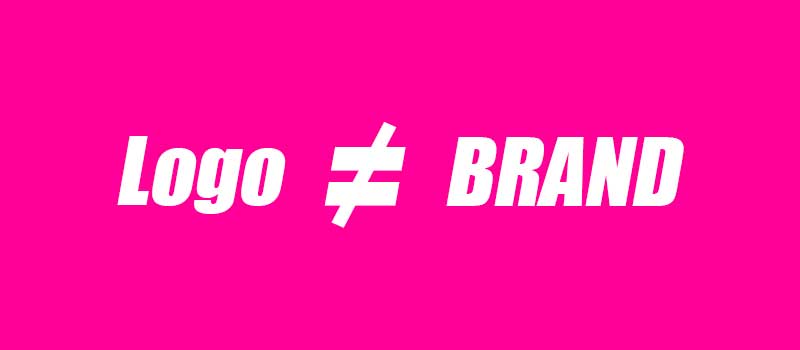
And evoking that memorability and recognition is the primary role of the logo.
There are no hard and fast rules when it comes to the types of logos brands can consider when setting out or rebranding.
However, choosing the correct type of logo is important in appealing visually to your audience and increasing the chances of being remembered in the buying decision.
Great logos tell great stories, and that’s why your brand strategy should be the foundational pillar on which your logo is designed.
In this article, we’ll consider different types of logos with examples and how you can design the right one to align with your brand strategy.
It’s worth noting that a single logo can fall under more than one category mentioned below.
To get started, here are the different types of logos with names.
9 Different Types Of Logos For Brand-Building With Examples
One-click subscribe for video updates
#1. Brand Marks or Pictorial Marks

Also known as logo symbols or brand icons, brand marks are made of a graphic symbol or icon that reflects a brand’s identity or what it does.
When you see such symbols, you can easily match the logo with the brand that owns them.
For example, Apple’s logo is an apple while Twitter’s logo is a bird. Other examples include Target, Shell, Instagram, and Youtube.
A pictorial mark can be used as a literal representation of your brand name and main business activity or to cleverly project your brand values.
For instance, Apple’s logo literally represents its brand name while the YouTube logo depicts a video play button to represent the video service they provide.
When To Use Brand Marks:
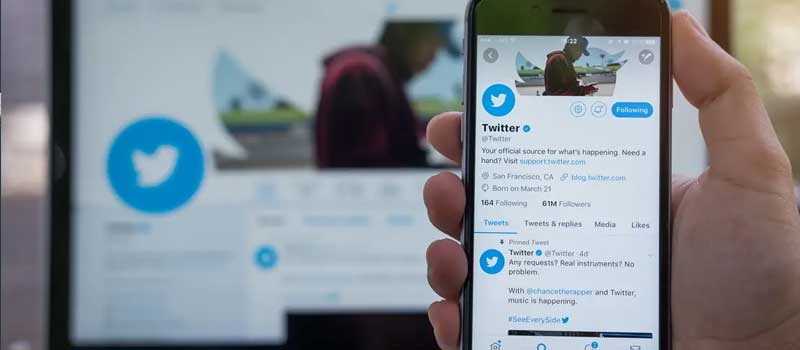
If you are a new company that’s currently at the brand recognition stage, it can be tricky to use a brand mark. This is because it can take a lot of time and effort to get people to associate the image with your brand.
However, if you decide to use this type of logo, one of the major considerations is the image to choose and its implication on your brand.
The images below are the T-Shirt Elephant and Metal Horse brands.
For the T-Shirt Elephant example, the elephant was carefully blended with a t-shirt to produce a unique image for the brand.
In the Metal Horse logo, you will also see that the horse is drawn in the form of metal artwork representing what they do.

Both brands match their logo with their business activity.
If you want to use a brand mark, your business must be into something that is quite related to the image or symbol you want to use.
If choosing a brand mark or pictorial mark for your logo, ensure there’s direct or abstract alignment to products or services the brand offers.
Brand marks are a good choice for brands that specialize in one product or service that can be easily represented by an image.
PRO Brand Strategy BluePrint
Build Brands Like A Pro Brand Strategist

#2. Wordmark Logos

A wordmark logo is essentially a type-based logo.
Brands use strong typography to create logos that use their business name to express their brand identity.
They are some of the most versatile logotypes as they are easily transferable to a variety of marketing materials.
If your company has a business name that is succinct, distinctive, and memorable, you can try the wordmark logo to create strong brand recognition.
For a wordmark logo to be effective, the choice of typography and its characteristics must align with the strategy and attributes of the brand.
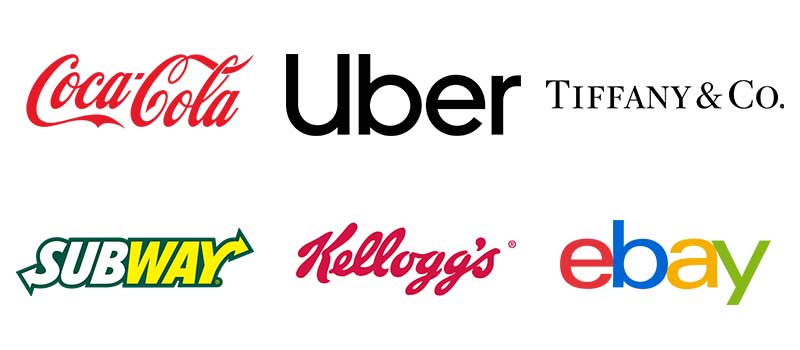
For example, a brand that aims to celebrate its long-standing heritage might do well to consider a more traditional type from a relative period.
If you don’t find an existing font to align with the look and feel you aim to achieve, you can create a custom typeface, which would add to the uniqueness of the wordmark.
Examples of brands that use wordmarks are Coca-Cola, Uber, Tiffany & Co, Subway, Kellogg’s, eBay, etc.
Explore Brand Strategy
Programs & Tools
When To Use Wordmark Logos:

A wordmark logo is a great choice if you’re just a startup and you want to increase the memorability of your business name.
#3. Abstract Logo Marks
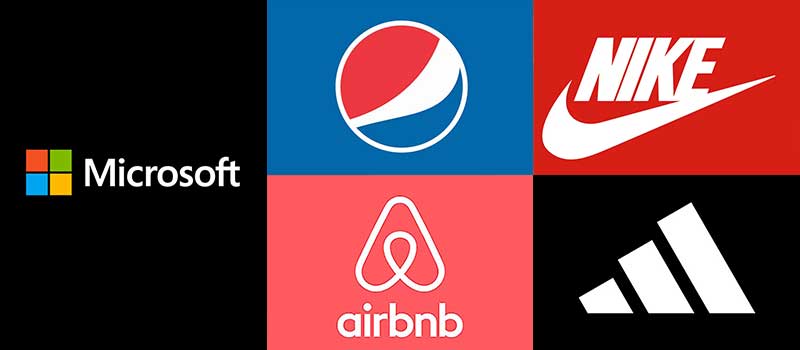
Abstract logo marks are the type of pictorial logo that does not have a recognizable image.
They are usually abstract geometric forms that are custom-made for a brand to express its uniqueness.
One advantage of this type of logo is that it gives brands enough room to design and create a logo that showcases and communicates their brand personality, values, and core message.
Some popular companies using abstract logo marks are Microsoft, Pepsi, Adidas, Nike, and Airbnb.
When To Use Abstract Logo Marks:

An abstract mark logo is a good option for brands that are into several distinct things, especially when you are more interested in communicating unique brand values that set your business apart.
However, when creating an abstract logo, you must keep refining it until it gets to the point where you’re convinced it’s communicating your intended message.
If not properly done, an abstract logo mark can become either too vague or too complex to understand.
#4. Mascots
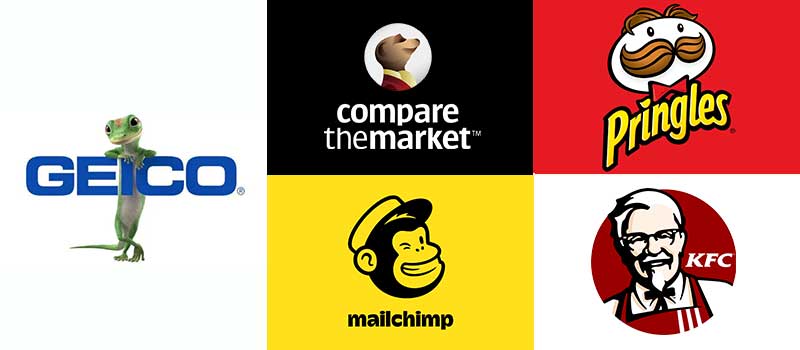
In mascot logos, brands use illustrated characters as visual representations of their brands.
Such characters can be fictitious or real people that are usually referred to as a brand’s “spokesperson” or “ambassador”.
The characters used in Mascots can be an excellent tool for customer interaction within marketing campaigns or throughout the brand experience.
Examples of Mascot logos are KFC, Comparethemarket.com , Pringles, Geico, and Mailchimp
When To Use Mascots:
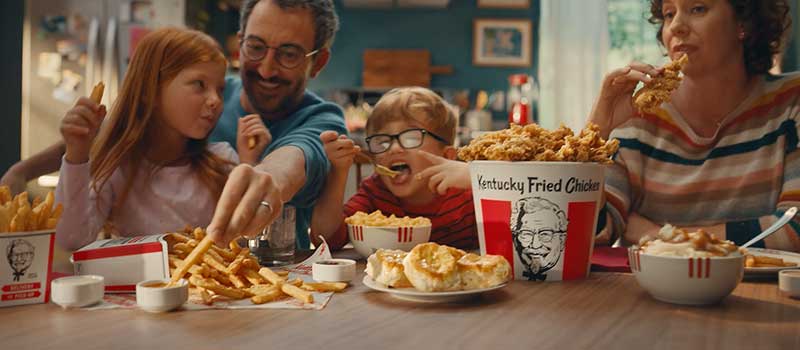
Mascots are a great way to add personality to a brand and to enable the embodiment of the brand’s attributes though this logotype doesn’t suit all brands.
Only brands that want to communicate a light-hearted approach should play in this space.
If your brand brings an element of fun into the lives of your audience or you simply want to communicate you’re light-hearted approach, a mascot logo could work for you.
#5. Combination Marks
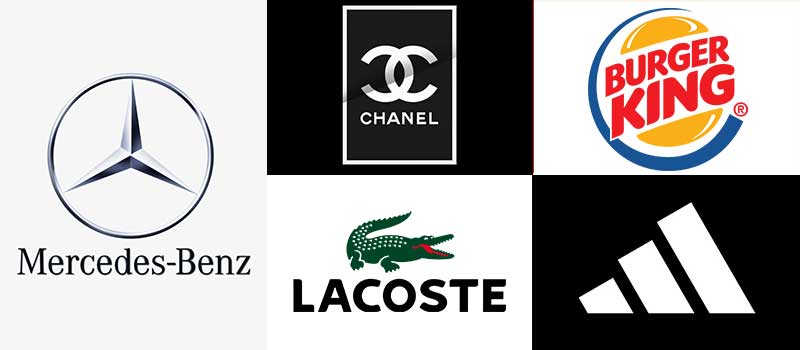
These types of logos combine a pictorial mark logo, an abstract mark logo, or a mascot with a letter mark or word mark.
They also come in different forms; the picture and text can be stacked side-by-side, or integrated together to create an image.
The combination mark is a flexible and obvious choice most businesses because combining text and icons can help communicate different ideas and attributes
It makes it easy for people to associate your brand name with the pictorial mark while the combined wordmark reinforces the associationas and increases memorability.
Examples of companies using the combination mark logos are La Coste, Burger King, Addidas, Channel, Mercedes-Benz.
When To Use Combination Marks:
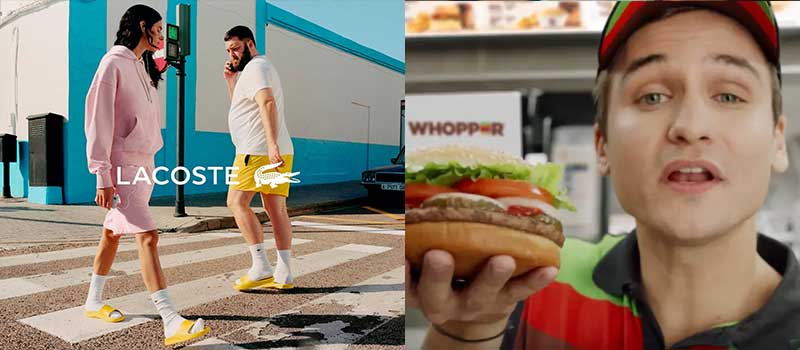
Combination marks are a great choice for new brands with little awareness as the multiple elements allows for business and brand associations as well as a variety of attributes through colour, typography and shapes.
As customers come in contact with your logo, they have multiple visual cues both from the pictorial mark and letter mark and this helps them to remember your brand.
#6. Emblem Logos
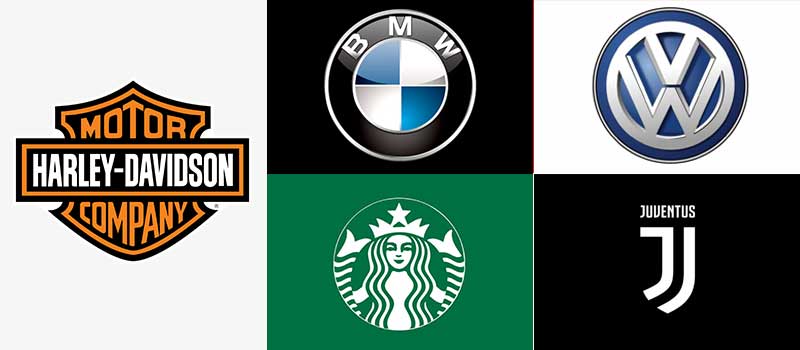
Emblems are crests, badges, and seals used by brands to promote their traditional values.
Emblem logos are designed by placing fonts in icons to provide unique logos.
Famous brands using this logotype include Starbucks, Harley-Davidson, BMW, Juventus and Volkswagen.
When To Use Emblem Logos:

Organizations like schools, government agencies, sports clubs, the auto industry, and brands with long traditions use this type of logo.
If you want to communicate a sense of tradition or high standard, the emblem logo may be a legitimate option.
As a bonus tip, keep your emblem logo as simple as possible to avoid clutter. Remember, the primary job of the logo is memorability.
#7. Dynamic Marks
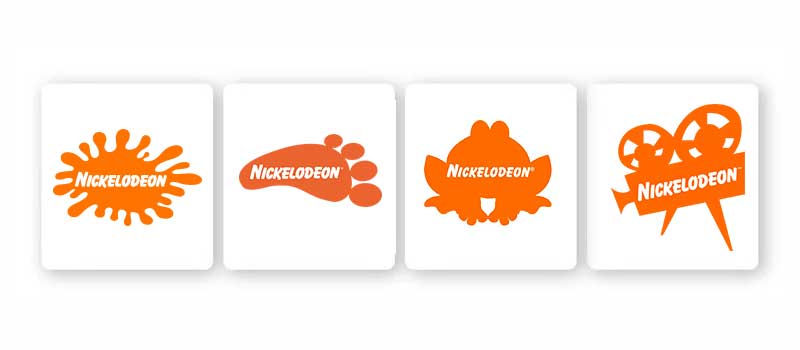
As the name implies, dynamic mark logos are created in different forms so they can easily be adapted to different branches or segments of a brand.
For each of the forms, an element of the logo changes, this may be the color, text, shape, or icon.
Examples of companies using dynamic marks are FedEx, Google, Nickelodeon, and Virgin.
When To Use Dynamic Marks:
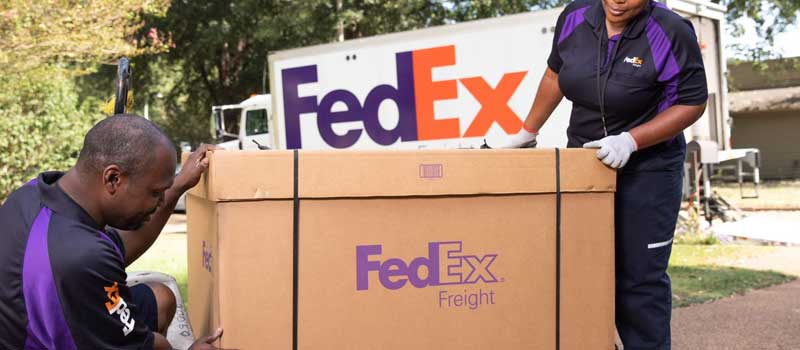
This type of logo is suitable for brands interacting with customers across several touchpoints such as mobile sites, responsive webpages, digital media, merchandise, traditional media, ads, etc.
It’s also a viable option for a branded house setup where the parent brand has a brand portfolio of brands serving different markets such as FedEx and Virgin,
Through dynamic marks are flexible by nature, it’s key to keep an element of consistency across the board so the logo variations are aligned.
#8. Lettermarks or Monograms
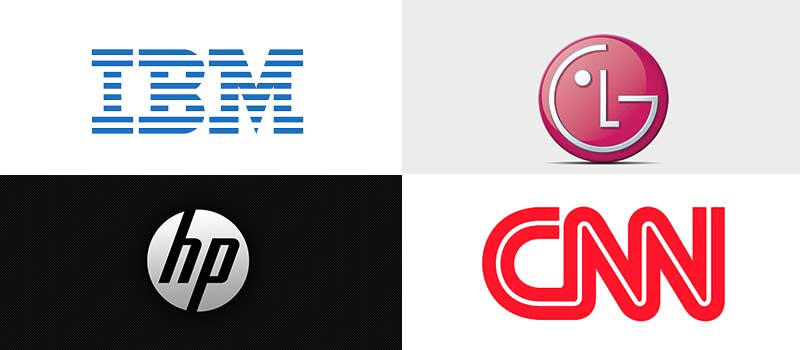
Lettermarks logos are created using the letters of a brand’s initials.
Think of brands like International Business Machines (IBM), Cable News Network (CNN), Hewlett Packard (HP), and Life’s Good (LG).
In most cases, the majority of the market doesn’t know the real names of the brands, and only identifies them by their initials.
You may not know a company named Bayerische Motoren Werke GmbH but no doubt you know the brand BMW.
That’s what letter marks help companies achieve. In letter marks, brands use elegant custom fonts to convey their brand identity.
When To Use Lettermarks:

If you have a lengthy business name, initialism can help you to make the name shorted and easier to say or pronounce.
A lettermark logo is certainly one of the best options for such brands.
That said, initialism as a naming strategy is not always the best option and concedes opportunities to make connections and assign meaning to what the brand does or what it represents.
#9. Letter Forms

Letterforms are one-letter logos, a miniature version of lettermarks.
The letter in the logo is usually the first letter of a company’s name.
Sometimes, companies create this type of logo as a complement to an existing logo and as a supplement or team player in the overall brand identity.
Successful letter forms however, can go on to become the preferred choice of logo use over time as it becomes more recognized
Examples of brands using letter forms are Netflix, McDonald’s, and Facebook.
When To Use Letter Forms:

If you are a brand that’s already popular, you can create a letterform logo for your brand.
However, remember to make it a memorable one.
If your brand has high levels of awareness, intorducing a letterform mark may help to increase levels of brand recognition and recall.
7 Principals Of An Effective Logo For Brand Strategy

One thing that sets iconic brands apart is the memorability and effectiveness of their logos.
Consider brands like Apple, McDonald’s, Twitter, Netflix, Facebook, and even Toyota. Each one of these brands boasts a simple and immediately recognizable logo.
Such logos are often products of a rigorous design process though many organically evolve over time..
Memorable logos with high levels of recognition all adhere to these principles.
Attractive

Your logo has to be visually appealing in a way that easily attracts the customer.
When creating a brand logo, be clear about your message and which visuals can help you communicate it.
There are certain emotions and feelings you want to evoke and knowing the right shapes, sizes, colors, tones, typography, etc, can help you evoke those
Distinctive
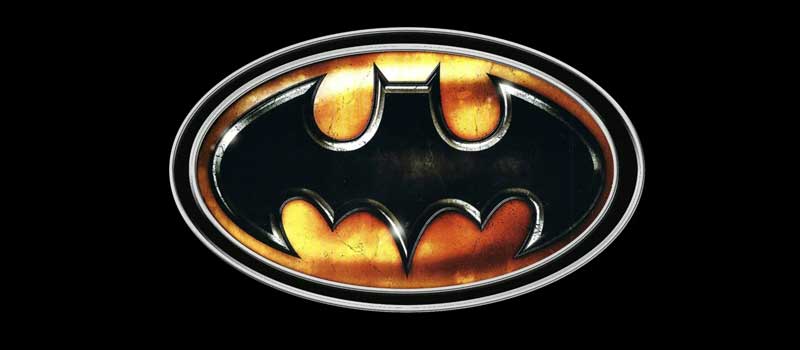
The job of your logo is to make your brand easy to remember and recognised when stacked alongside competitors and other non-competing brands.
When creating your logo for your brand, look to your competitors not for what you should do, but what you shouldn’t.
Timeless

When planning a logo, don’t follow the trends. What’s trendy today will look dated in a few years.
Think long term.
A change of logo is synonymous with a major brand strategy overhaul, so this is not something that should happen your logo design remain relevant despite emerging trends and market changes.
Relevant

Your logo should be relevant to your business.
The shapes, images, and typeface used in a logo should be in line with what the brand is about and how they want to be perceived.
A relevant logo gives people an immediate feel of a sense of meaning, understanding and value of the brand to them
Memorable

Your business is just one out of millions of businesses vying for the attention of customers.
That’s why you should carefully create a logo that people can easily recall from their memory.
As always, simplicity and distinctiveness are key.
Professional
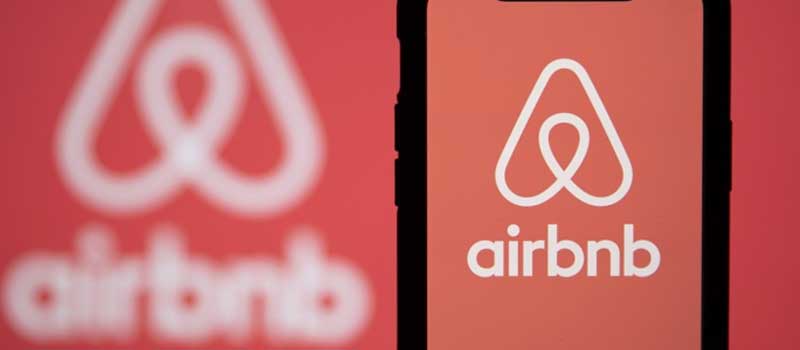
Whether you’re a startup or big business, get a professional logo design.
Your logo will influence customers’ perception of your overall brand outlook.
In the modern market, you can get a logo for $5. If you’re serious about your business, you wont cut corners.
Scalable
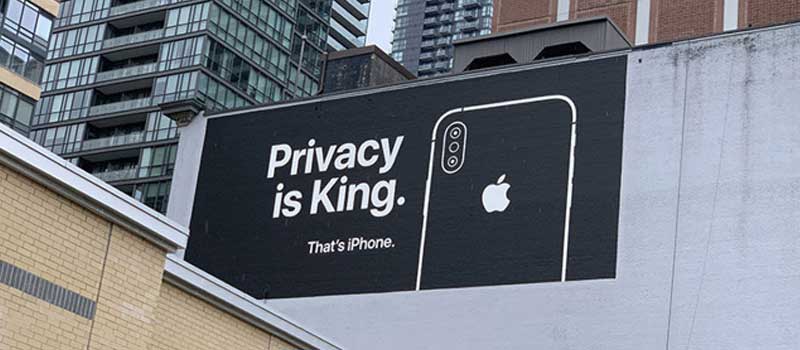
Logos are used in different media; from mobile ads to bilboard ads to car wraps, bottlecaps and everywhen in between.
The final vector of your brand logo needs to look sharp at every size and on every single touch point.
The logo is a part of your brand visual identity and overall brand strategy and it’s usually the first thing people see when interacting with your brand.
It only takes a few seconds for customers to make a judgment about your company based on what they’ve seen.
Tune up your brand strategy to create logos that will convey the right message about your brand to your target audience.
Over To You
As you can see, when it comes to logotypes, there are many options to choose from.
The choice of logotype, however, must be born from the brand strategy, including the target audience, the brand’s position and the brand personality.
Understand your audience, the role you want to play in their lives and how you want to be remembered before designing from the principles outlined above.
If you’re design is successful, your brand will be armed with a memorable, easily recognizable logo that communicates the brand and executes the strategy from the very first touchpoint.
On-Demand Digital Program
Brand Master Secrets
Make the transition from hired-gun to highly valued brand strategist in less than 30 days. The systems, frameworks and tools inside this comprehensive program are all you need to level up.








